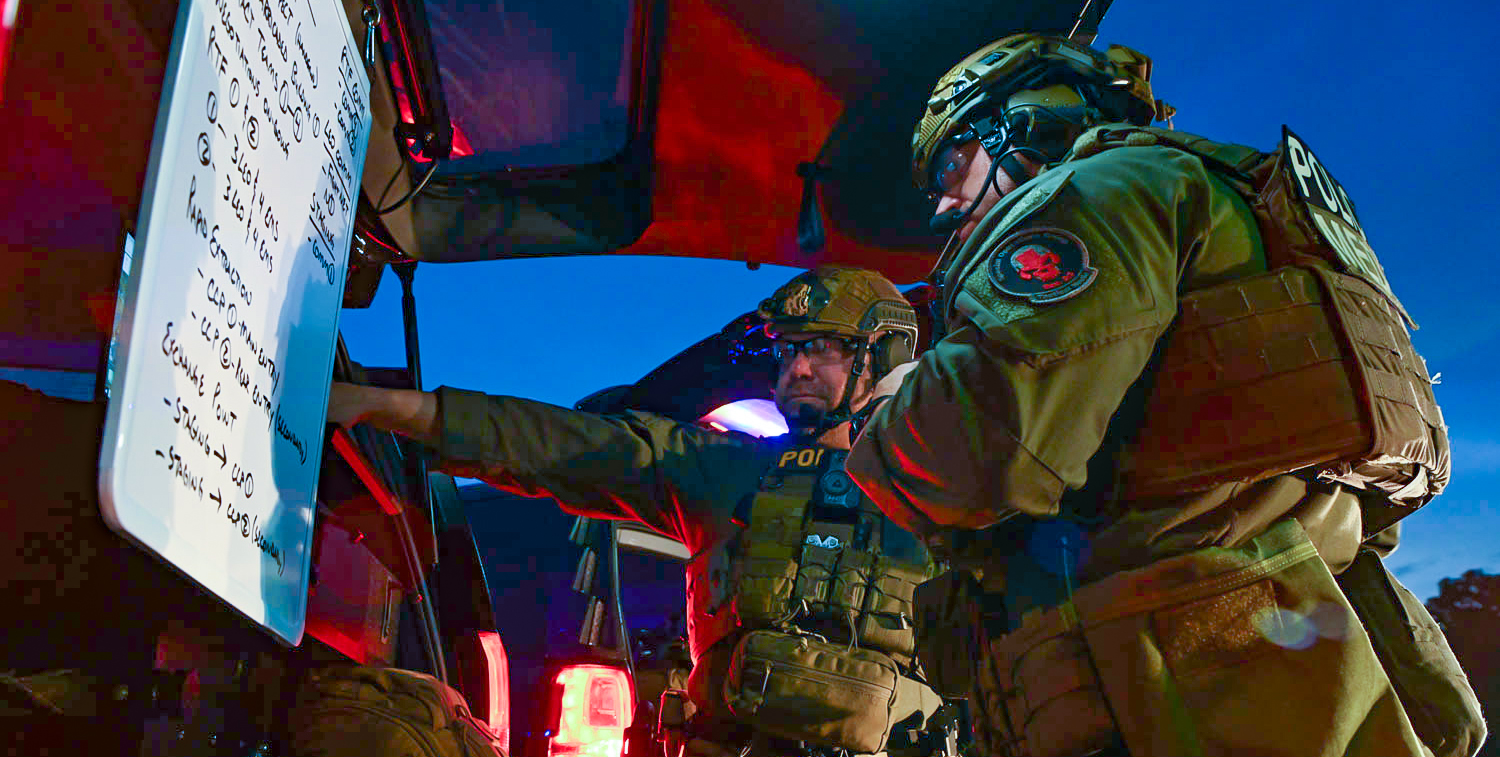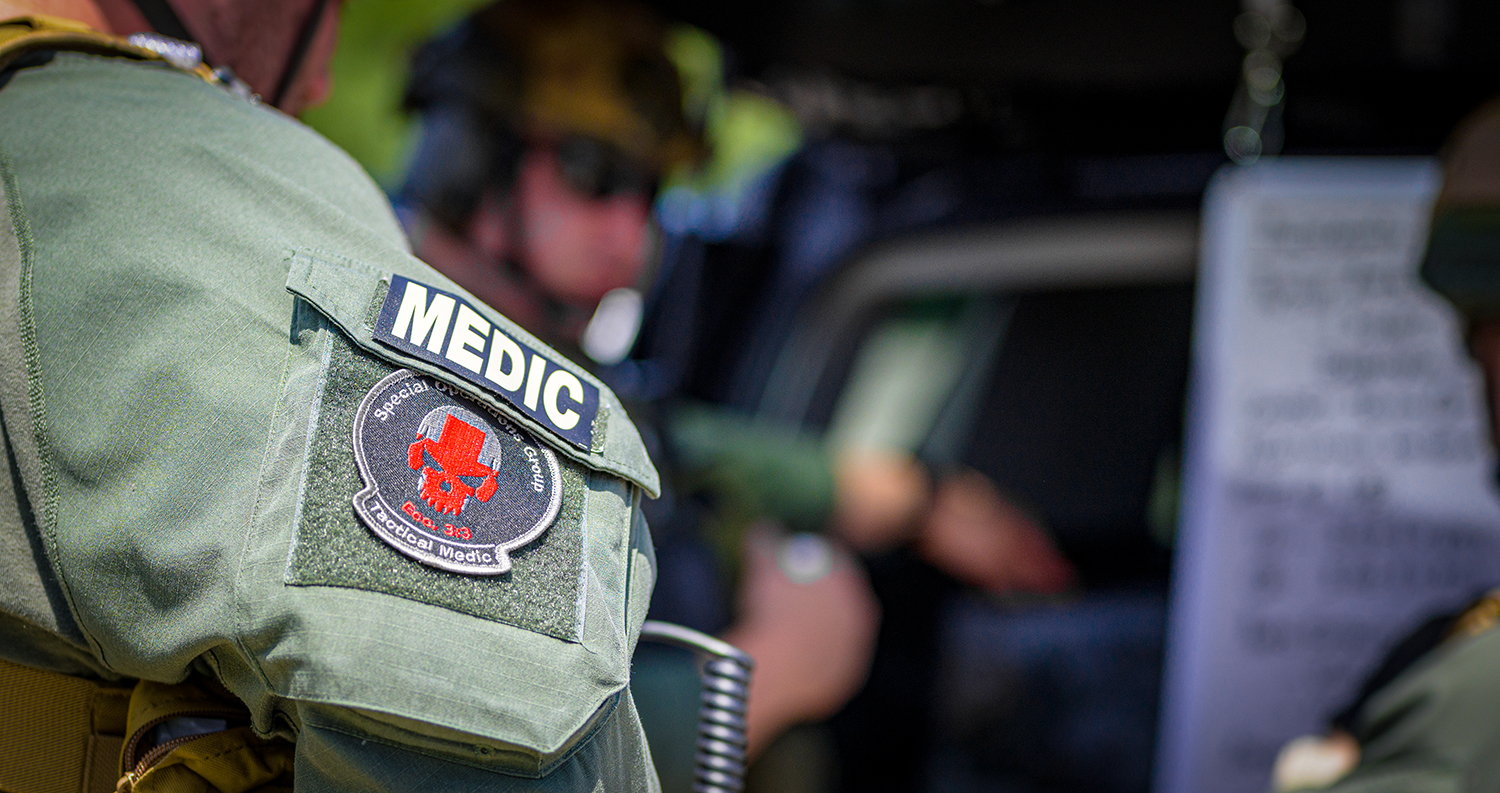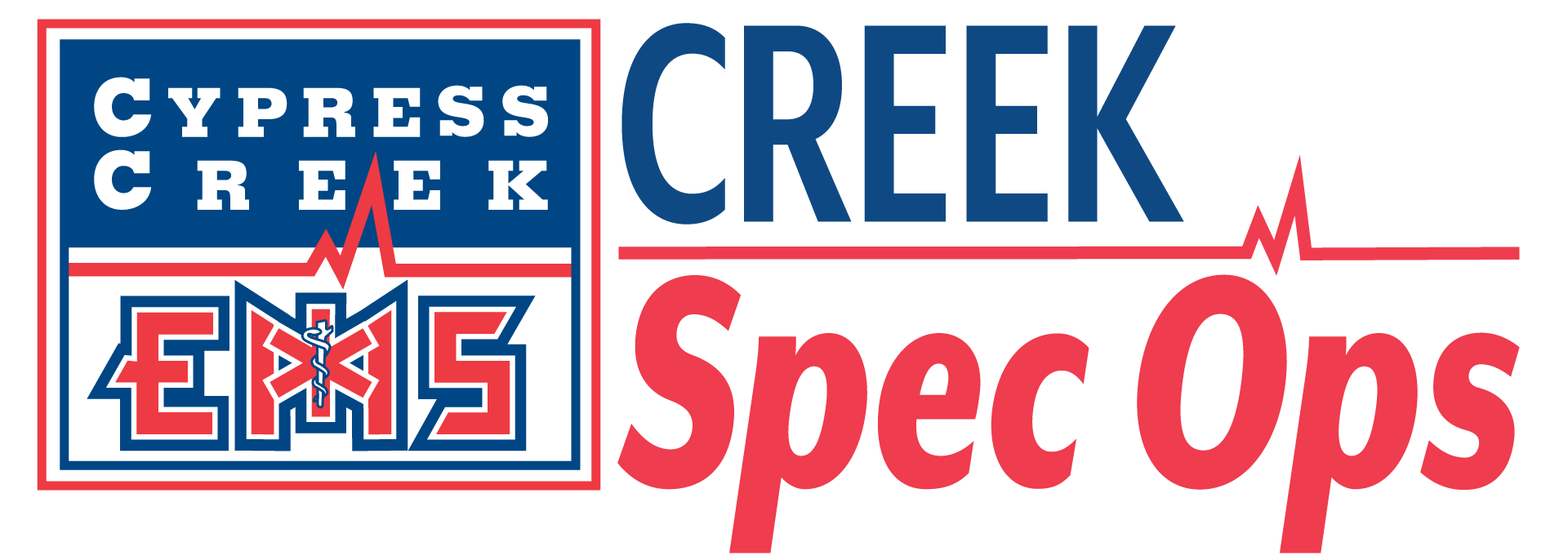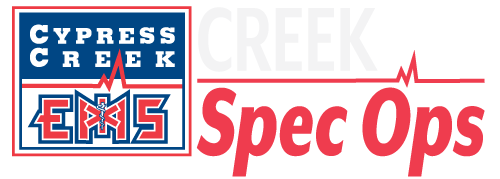Cypress Creek Tactical Medic Team

Tactical Medic Team
Evaluate Vulnerability with Mitigation Through Training
The CCEMS Spec Ops Group provides operational medical support to public safety agencies throughout the community. Each specialized team utilizes both civilian and military medicine models to aid law enforcement, fire departments, search and rescue, and hazmat teams responsible for providing high-risk services to the community, saving lives and mitigating injury.

CCEMS Spec Ops Group’s site security, survey, and assessment services perform a comprehensive risk assessment of your facilities for any potential weak points or threats to the safety of your infrastructure and your employees. The assessments take into account your geography and customer base, and the training we provide can help your staff mitigate the potential threats.
On-Site Assessments After Injury
Due to the inherently hazardous nature of austere environments, more agencies are adding specially trained medical contingents to their tactical and special rescue teams. Leaders recognize the value of immediate access to highly-skilled, on-scene medical assessments, care and treatment that saves time, resources and lives.
History of the Cypress Creek Tactical Medic Team
Cypress Creek EMS leaders formed the team in 1992. Former Cypress Creek EMS Executive Director Brad England had the foresight to seek approval from the state to respond anywhere in the state of Texas when supporting law enforcement. This was essential given the team supported multi-jurisdictional law enforcement task forces with jurisdiction across numerous Texas counties. In the late 1990s, CCEMS began supporting the Federal Bureau of Investigation, Houston Division, SWAT Team and was the first to establish a memorandum of agreement with the FBI to provide Tactical Emergency Medical Support (TEMS). Through this memorandum, the team’s reach now spans the country when working in support of the FBI.
In 2000, the team has took its dedication one step further when Cypress Creek EMS initiated its international training program: The BASIC TACTICAL OPERATIONAL MEDICAL SUPPORT COURSE is an 81-hour, nationally accredited, field intensive, scenario-based, training program. This training program is offered twice each year in the spring and fall. The reputation of the course is such that it draws EMTs, Paramedics, and Trauma Physicians from all over the world representing law enforcement, the fire service, and EMS.
In August of 2016, the CCEMS team became the only tactical medics in the U.S. to carry blood products for transfusion on every mission and transitioned to whole blood in September 2017, also a first.
Tactical Emergency Medical Support (TEMS) Mission
Given the extremely hazardous nature of tactical law enforcement operations and the remote locations in which they often take place, more and more law enforcement agencies at the local, state and federal levels are adding specially trained medical contingents to their tactical teams. They recognize what leaders since Napoleon have known: access to highly-skilled, on-the-scene medical assessment, care, and treatment can make a life or death difference to the outcome of a mission. Critical experience gained during natural disasters, barricaded standoff, hostage situations, domestic terrorism, and the more prevalent use of military-type weapons confirms the demand for the delivery of emergency medical care on the home battlefront. In 2017, this was never more clear when Dallas and Baton Rouge area law enforcement officers were ambushed, with military-style weapons, in the streets of their cities. Between the two incidents justg ten days aparer, eight police officers were killed and 14 were injured, including two civilians.
The fact that EMS assistance is often far removed from the scene in these situations introduces an even higher level of risk and danger for law enforcement personnel.
Tactical law enforcement units are composed of highly trained officers who are capable of assuming dangerous, tactical assignments with a high degree of proficiency and expertise. These units are used for crisis intervention and rescue with negotiation and assault capabilities. Their goal is to accomplish assignments without injury or loss of life. In support of these operations, Tactical Emergency Medical Support (TEMS) personnel take over the responsibilities of providing lifesaving treatments while in a Care Under Fire scenario, where conventional EMS response is not possible.
CCEMS believes that TEMS units should have a solid foundation based on the military medicine model, Tactical Combat Casualty Care (TCCC). Team clinical guidelines include the three phases of TCCC known as Care Under Fire (CUF), Tactical Field Care (TFC), and Tactical Evacuation Care (TACEVAC). Every team member is an instructor in TCCC
Integration
The team is made up of tactically trained law enforcement officer/paramedics who have undergone extensive training in Tactical, Operational Medical Support. Team members have also undergone training in basic/advanced tactics, tactical waterborne operations, high-rise rescue, and narcotics enforcement operations, to name a few. This additional training prepares the team members to function within the inner perimeter to support tactical law enforcement operations.
Team members train with tactical teams regularly to gain a working knowledge of the team, its tools, and tactics – including mission objectives, weapons, pyrotechnics and other devices likely to be deployed, as well as communication policies and standard operating procedures. The Cypress Creek EMS Team is not a SWAT Team. Its primary mission is to provide an expanded scope, medical support for the tactical law enforcement operation. The tactical law enforcement training each member receives enables them to operate efficiently and safely within the inner perimeter and at the Point of Wounding during a crisis.
The Cypress Creek EMS Tactical Medic Team’s objectives are direct and straightforward; be prepared to provide immediate operational medical support for law enforcement agencies upon request to
- Enhance mission accomplishment and,
- To reduce the risk of death, injury, and illness among officers, innocent bystanders, and perpetrators.
- Keep the tactical operators at work instead of injured and off-duty
An Expanded Scope
Team members clinically operate under an expanded scope of practice. Texas is a delegated practice state, meaning, the paramedics can function to the level authorized by their medical director. They work with an expanded pharmacopeia and set of interventions not typically used by paramedics. In 2017, the blood product program was expanded to Whole Blood. CCEMS Tactical Medics were the first to deploy with Low Titer, type O – Positive, Whole Blood (LTOWB) in the country. Medics carry two units of LTOWB with them on all training events and operations.
Tactical Athlete and Injury Prevention
The team joined forces with IRONMAN Sports Institute experts in Strength, Conditioning, and Nutrition to develop a comprehensive physical assessment, strength, and wellness program. Most tactical team physical assessments are not functional and grounded in tasks that a tactical operator would have to perform in the course of an operation. CCEMS Tactical Medics put IRONMAN experts through functional tactical training in all of the protective gear worn by operators and medics. It was an eye-opening experience for trainer Rashad Ford.
In 2012, CCEMS partnered with the IRONMAN Sports Institute and Memorial Hermann to enhance their support capabilities beyond that of trauma and illness. Working alongside Memorial Hermann licensed Athletic Trainers and Physical Therapist, paramedics received specialized training on sports-related injuries, mitigations strategies, and treatments. The team deploys with an Athletic Trainer (AT) on specific types of operations. Not only can the AT assist with injury prevention, assessment, and treatment, but they can aid in the routing of the patient through the medical system. By sending an injured operator with an isolated “Sports-related” orthopedic injury to a Sports Medicine/Orthopedic doctor, it can decrease time to definitive care, therefore, decreasing time off work and reducing costs.





